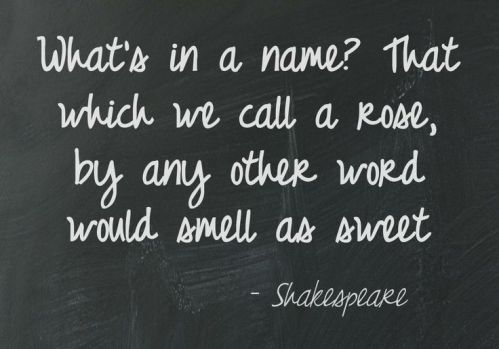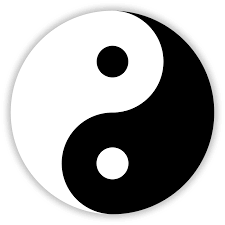Three “Wow”s about Finding My Teaching Voice
When I tried to discover my authentic teaching self, I went through three “wow” moments.
Wow, panic is a common thing. That was the first feeling I went through when I was discovering my teaching voice. When I started to try to picture myself teaching, and search for a suitable and strong teaching image, I felt so embarrassed and panic that I couldn’t really see one, which got me into an even worse situation. I kept this secret to myself at first, I tried to think over and over again, and I still didn’t get an answer or come up with a good model. Then I finally decided to open up to people around me about this, I found I was not the one wondering about their teaching image. Just like if you get a new pair of glasses, you start to pay attention to glasses on the road. Suddenly, I saw the same problem everyway, even in the TV shows. In How I Met Your Mother, the main character Ted Mosby got hired to be a professor at university, he went through a change from an architect to a professor of architecture. He was so panic that he even forgot if there was one or two “F” s in the word professor when he would like to write down his self-introduction.
Source: https://www.pinterest.com/courtnysauer/how-i-met-your-mother/
Wow, role model is important. That was the second feeling I found out about the searching journey. When I tried to anchor myself, I started to think about all the great professors I had courses with before, their teaching voice, their personality, their ways to connect with students. At one level, I noticed that I always talked about the professors’ teaching style with my friends, and always assumed that if I was teaching, I would like to be like them or make improvements. I heard so many other students talk like that too. For example, when I posted about pink time inspired by Dan Pink, I noticed that some comments said that they would like to try so. That is an important kind of imitating and learning, just like the basic one human species did million years ago. At another level, I felt that my teaching voice at this point is still adjusting, so it is always changed according to different professors’ influences. Role model is important to this standard since our teaching, like our lives, are influenced by different people we run into, different incidents happen, different path we choose every day.
Wow, acting can’t last long in teaching. That was the third thing I realized along the searching way. Going back to Ted Mosby, he set himself up as a teaching image too far away from his own personality, all the weird and awkward acting only leaded to those moments made him lose sight of who he was for a second. I felt the same, if we want to follow up a teaching role model that is too different from our true self, acting can’t last long.
Source: http://www.lifehack.org/articles/communication/15-relationship-lessons-that-ted-mosby-taught.html
Thus, my teaching style and approach so far are as followings. First, I accept myself as a learner when it comes to teach, so I would not be too panic once I feel I am still searching for my style. I would be always trying new activities and approaches to get the feedback from students and adjust more. Second, I gain new knowledge and new teaching images from my professors every day, I always associate their teaching with their personality to see how they fit themselves into teaching, and discover how different people teach differently. Third, I try to keep the true me when I teach, since I recognize myself as kind, energetic, genuine, creative, but I also like to live up to perfection. So I would teach in an energetic and genuine style, filling with creative activities. I would lay down detailed rules about the class and the assignments, and grade students in a strict way focusing on their learning process and learning effort.


 self at home. Thoughts are food of our brains. We gather the ingredients, apply the recipes we learn, but most importantly we personalize it. We may not afford to cook at home all the time. We may need a quick snack or sometimes we even crave for comfort food. However, at the times we go to the restaurants we assess the authenticity of the recipe, the creativity of the use of ingredients, the mastery in cooking and service.
self at home. Thoughts are food of our brains. We gather the ingredients, apply the recipes we learn, but most importantly we personalize it. We may not afford to cook at home all the time. We may need a quick snack or sometimes we even crave for comfort food. However, at the times we go to the restaurants we assess the authenticity of the recipe, the creativity of the use of ingredients, the mastery in cooking and service.




 Now I should mention that I’m not much for scripts because I feel I do better ‘winging it’, but I do want to have bullet points so I make sure to cover the necessary information at the right parts during the lecture. In addition to being organized for the in-class portion I want to be organized in how assessments are distributed, collected, and graded. One last thing that I want to make sure to be organized in is the online parts of the class; I want to make sure the online part of the class compliments the in-class portion.
Now I should mention that I’m not much for scripts because I feel I do better ‘winging it’, but I do want to have bullet points so I make sure to cover the necessary information at the right parts during the lecture. In addition to being organized for the in-class portion I want to be organized in how assessments are distributed, collected, and graded. One last thing that I want to make sure to be organized in is the online parts of the class; I want to make sure the online part of the class compliments the in-class portion. Due to my undergraduate education, I really like the idea of an open-door policy opposed to strict office hours. For this reason, I always like to inform students that they are free to come past my office with any questions they have. Right now, I always tell students to email me first so we can setup a time that works best for both of us. When I’m in a more teaching oriented position I plan to just tell students they can email me with questions, but if my door is open they are more than welcome to come in.
Due to my undergraduate education, I really like the idea of an open-door policy opposed to strict office hours. For this reason, I always like to inform students that they are free to come past my office with any questions they have. Right now, I always tell students to email me first so we can setup a time that works best for both of us. When I’m in a more teaching oriented position I plan to just tell students they can email me with questions, but if my door is open they are more than welcome to come in.



 teaching voice” is honest, audibly curious, and openly enthusiastic about teaching and interacting with my students. I try to use my voice to incite civility and reason. (Okay, I stole that from the
teaching voice” is honest, audibly curious, and openly enthusiastic about teaching and interacting with my students. I try to use my voice to incite civility and reason. (Okay, I stole that from the